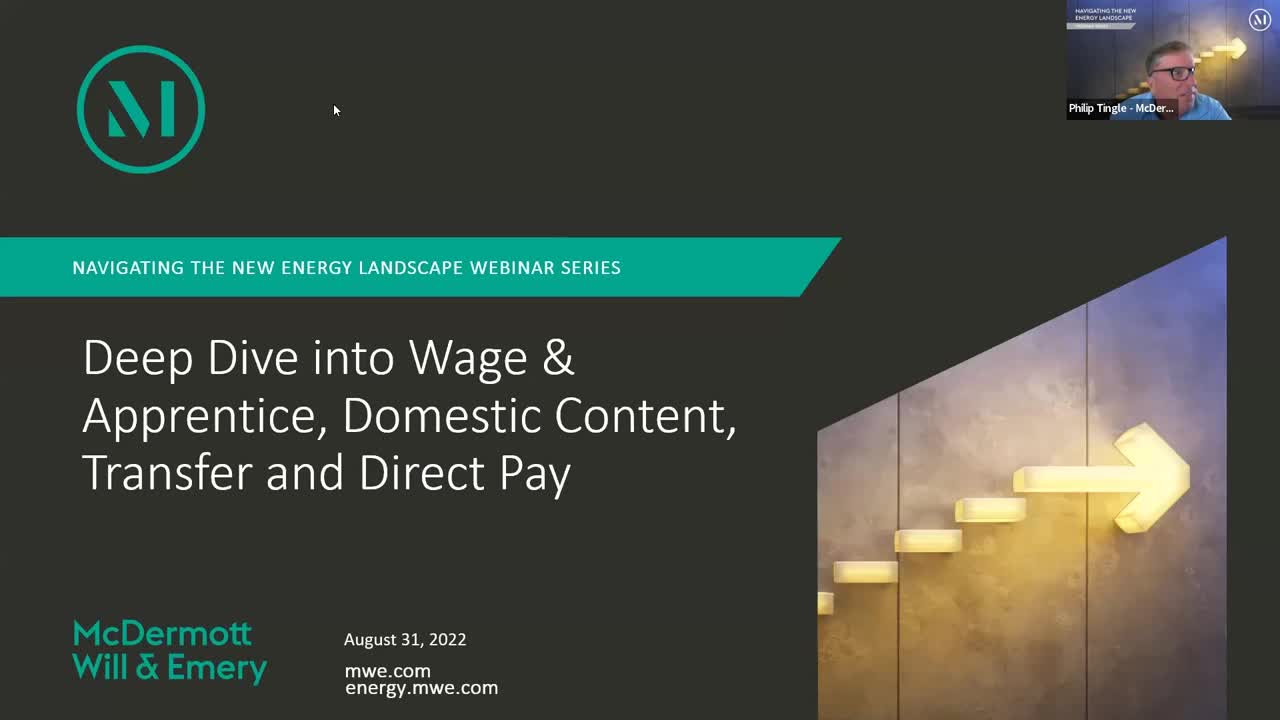On August 31, McDermott Partners Heather Cooper and Philip Tingle provided a detailed review of the wage and apprentice, domestic content, transferability and direct provisions of the Inflation Reduction Act of 2022. They discussed the technical requirements for each of the new sections and offered insight into how these new rules will impact the deal pipeline, planning and negotiations.

Below are key takeaways from the discussion:
- The extension and expansion of the existing ITC and PTC by the Inflation Reduction Act (IRA) come with additional requirements, a critical component of which is the all-new wage and apprenticeship requirement (W+A) for 1MW or greater energy projects. Because of both the newness of the rules and the need for additional IRS guidance, the beginning construction rules are going to have continued relevance while taxpayers wait for the market to sort out how it will address W+A compliance.
- For projects beginning construction after the W+A guidance, taxpayers must consider how they will monitor W+A compliance, in particular with respect to wages paid to and labor provided by employees of contractors and subcontractors. Taxpayers should consider what types of covenants and representations they will require of contractors, how to draft indemnities to allocate the risk of default, costs to cure failures to meet W+A, and in the worst case the loss of 80% of the ITC or PTC.
- There is limited direct pay available to tax-exempts, government entities, Indian tribes, and the like, except for the credits for clean hydrogen, carbon capture and advanced manufacturing credits—which are available to non-exempt taxpayers.
- As an alternative to direct pay, taxpayers may elect to transfer their credits for cash. Those proceeds are tax-free, generally with no cap, phase-out, limitation or exception. For partnerships, the election is made at the partnership level, which creates planning complexities on who will control elections and make indemnities, and how remaining partnership items will be taxed and allocated. Taxpayers will need to plan around such situations, and transferability likely won’t simplify the financing of renewable projects.
To access past webinars in the Navigating the New Energy Landscape series and to begin receiving Energy updates, including invitations to the webinar series, please click here.
read more

 Subscribe
Subscribe
